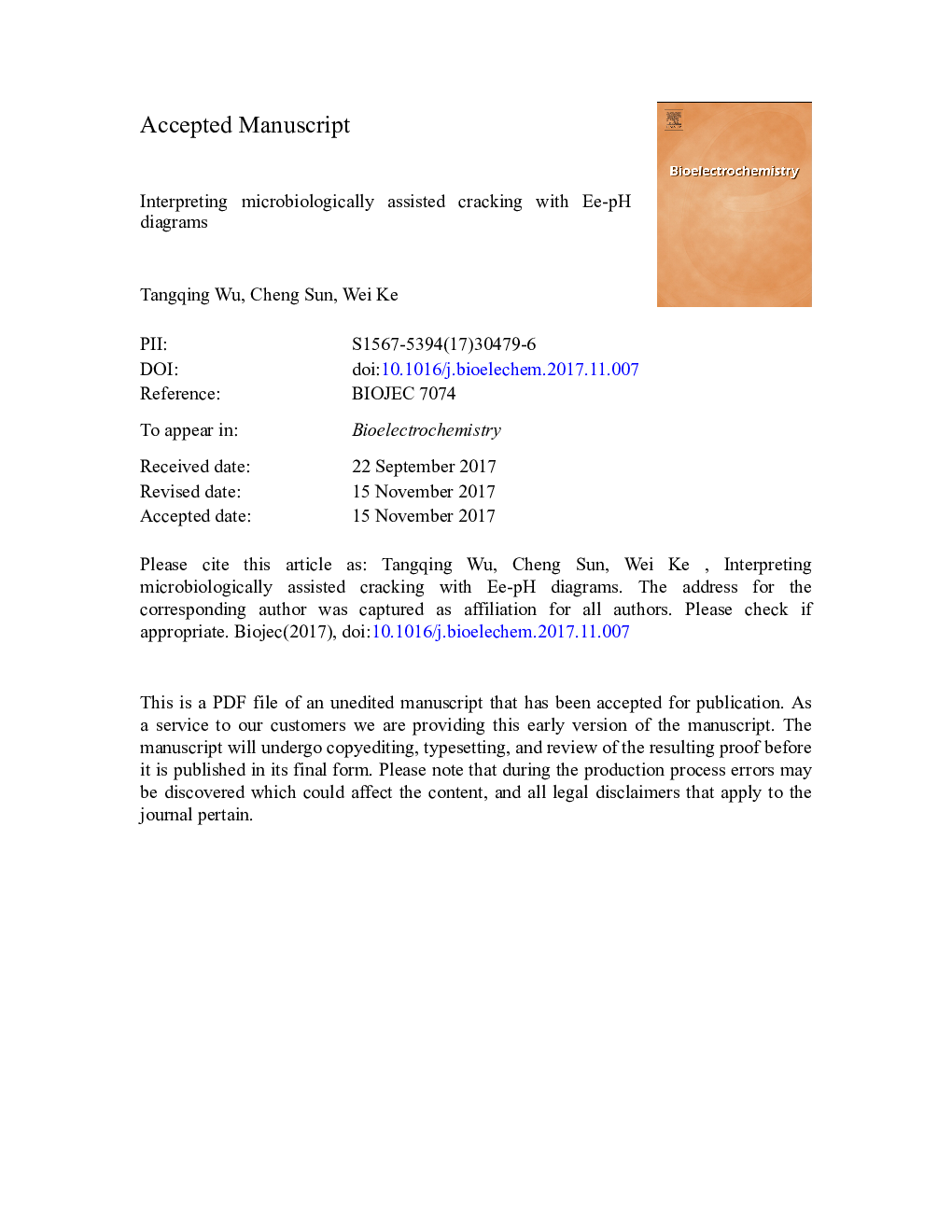| Article ID | Journal | Published Year | Pages | File Type |
|---|---|---|---|---|
| 7704704 | Bioelectrochemistry | 2018 | 32 Pages |
Abstract
Although many mechanisms have been proposed to explain the microbiologically assisted cracking (MAC) of steel and copper, a theoretical interpretation is necessary. In this paper, we attempt to give a theoretical interpretation of sulfate/nitrate reducing bacteria (SRB/NRB)-assisted cracking using Ee-pH diagrams. Under the combined actions of SRB/NRB and external stress, the cell potential (Ecell) and the corrosion current density of the corrosion reaction increase, such that the corrosion reactions become more thermodynamically favorable. This is the nature of MAC. Nitrate is a far more potent oxidant than sulfate, and thus, the NRB-assisted cracking of iron is a more thermodynamically favorable process than the SRB-assisted cracking. Furthermore, the thermodynamic interpretation is attempted to implicate into the classical stress corrosion cracking mechanisms of pipeline steel.
Related Topics
Physical Sciences and Engineering
Chemistry
Electrochemistry
Authors
Tangqing Wu, Cheng Sun, Wei Ke,
